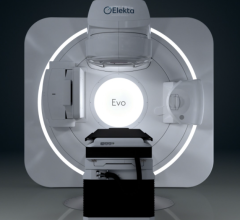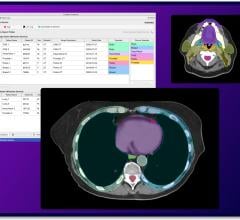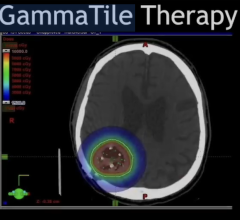August 9, 2016 — Elekta announced that its high-field magnetic resonance linear accelerator (MR-linac) was featured in 27 abstracts presented at the 58th American Association of Physicists in Medicine (AAPM) annual meeting and exhibition, July 31 – Aug. 4 in Washington, D.C.
Elekta’s MR-linac fully integrates three subsystems to achieve what the company calls unparalleled precision and accuracy in radiotherapy (RT): an advanced linear accelerator, a 1.5 Tesla magnetic resonance imaging (MRI) system and online adaptive workflow software. Combined, these systems allow for simultaneous radiation therapy delivery and high-field MR tumor monitoring, enabling online treatment adaptions in response to changes in the targeted tumor position.
Three abstracts highlighted the changing environment during radiotherapy treatment resulting from breathing, digestion and other physiologic activity, and demonstrated how MR-linac can be used to respond to these changes and to ensure accurate dosing of target tissue:
- Abstract SU-D-207A-7: “The effects of inter-cycle respiratory motion variation on dose accumulation in single fraction MR-guided SBRT treatment of renal cell carcinoma”; Bjorn Stemkens, doctoral candidate in the Department of Radiotherapy at the University of Utrecht Medical Center. This presentation evaluated three models used to characterize and adapt to the impact of respiratory motion on radiation dosing to the kidney during linac-based RT: static anatomy (STATIC), adjusting for motion based on timing of the respiratory cycle (AVG-RESP) and detection of motion using 3-D images (PCA model). Results showing different dose observances among the models found the PCA model more effectively captured inter-cycle random motion. This allowed for mitigation of erroneous dosing that would have occurred with the AVG-RESP model. Such mitigation is essential for delivering the planned RT dose to the tumor while minimizing exposure of healthy tissue.
- Abstract MO-E-BRC-0: “Fast online replanning techniques”; X. Allen Li, Ph.D., professor and chief of medical physics at the Medical College of Wisconsin. This invited presentation was part of an education session titled “Online adaptive radiotherapy – Considerations for Practical Clinical Implementation.” Li focused on the importance of speed and high-quality imaging in online treatment replanning. High-field MR images, such as those provided by the MR-linac’s 1.5T imaging system, are ideal for replanning because they provide excellent soft tissue contrast and/or physiological information, which differentiates the tumor site from healthy tissue. High-field images also eliminate contouring uncertainties from low signal-to-noise ratio that occur with low-field images. Li shared examples of how online replanning was used to improve coverage and/or sparing using smaller margins in both the prostate and pancreas; and
- Abstract TH-CD-202-12: “Online inter-beam replanning based on real-time dose reconstruction”; Cornelis P. Kamerling, post-doctoral training fellow in the Division of Radiotherapy and Imaging at the Institute for Cancer Research in London. This presentation discussed the development and implementation of an online replanning workflow used to create and deliver conventional and reduced margin treatment plans for a patient with prostate cancer. Results demonstrated that replanning is technically feasible and has the potential for margin reduction. The data also suggest that replanning can be used to reduce radiation exposure to nearby organs.
“Establishing online treatment replanning is essential to reduce margins and optimize care for cancer patients,” said Li. “Image speed and quality are critical to effective replanning, and both require the high-field MR imaging that can be achieved with MR-linac. A growing body of evidence demonstrates that MR-linac supports margin reductions in the prostate and pancreas. Additional forthcoming research from the MR-linac consortium will provide further clinical validation, paving the way to integrate this transformative technology into the treatment paradigms for prostate, pancreatic and a variety of other cancers.”
An additional 24 abstracts were presented during the conference, comprising 15 oral presentations and nine poster presentations. Of these, several described novel tools, devices and algorithms for assessing and adjusting dose delivery for the MR-linac platform. Findings from these studies indicated that a variety of dosimeters function effectively in the presence of a magnetic field, and that appropriate computer algorithms can be used to adapt additional dosimeters for use with MR-linac. The availability of multiple dosimetry approaches is important for ensuring development of the MR-linac technology in a manner that allows optimized and accurate radiotherapy treatment.
Elekta’s MR-linac is a work in progress and not available for sale or distribution.
For more information: www.elekta.com


 May 14, 2024
May 14, 2024 








